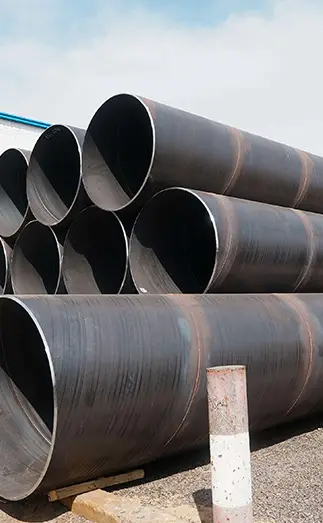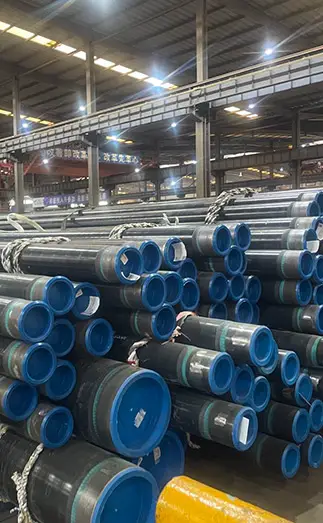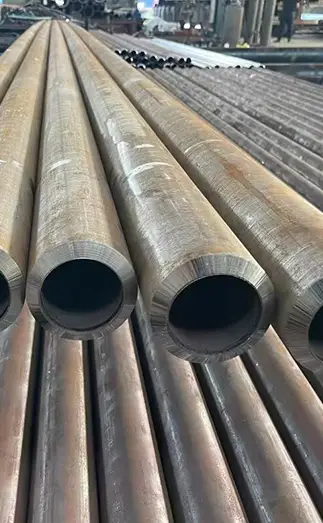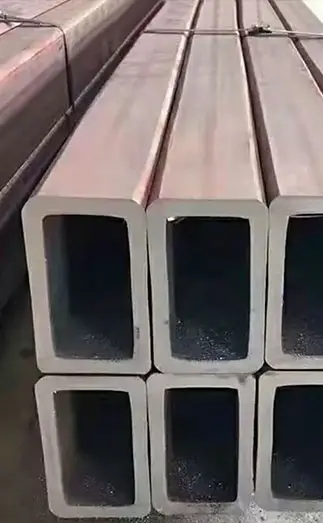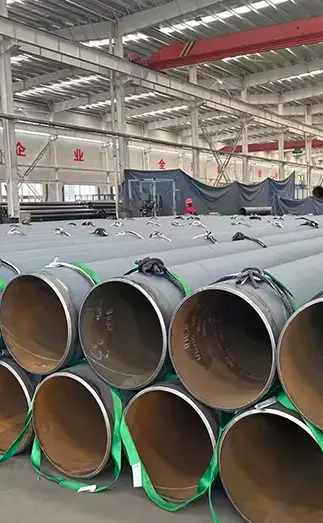Cold-rolled seamless steel tubes, also known as precision seamless steel tubes, are high-precision products manufactured through a cold-rolling process.
They are produced with outer diameters ranging from 4.0 to 450 mm and wall thicknesses from 0.04 to 60 mm, meeting the requirements of GB/T 3639-2008.
Production Process of Cold-Rolled Precision Seamless Steel Tubes
The base material for cold-rolled precision tubes is typically a hot-rolled seamless tube, made from high-quality carbon structural steel or alloy structural steel such as 10#, 20#, 35#, 45#, 16Mn, 20CrMo, and 42CrMo.
The raw tube must have a clean surface free of cracks, folds, or delamination to ensure processing quality.
Process Flow:
Round tube billet → Heating → Piercing → Heading → Annealing → Pickling → Oiling (or copper plating) → Multi-pass cold drawing/rolling → Billet tube → Heat treatment → Straightening → Hydrostatic test / flaw detection → Marking → Warehousing
The first three steps are consistent with general seamless tube production. The process begins to differ after perforation:
The hollowed billet undergoes heading, annealing, and acid pickling.
After pickling, it is oiled and then subjected to multiple cold-drawing or cold-rolling passes, producing a new precision billet tube.
This is followed by special heat treatment and straightening.
After straightening, the tubes are sent to a metal flaw detector or hydrostatic testing equipment for internal inspection.
Cracks, bubbles, and internal defects can be detected at this stage.
The tubes then undergo strict manual selection, and finally, markings such as serial number, specifications, and batch number are applied.
Process Characteristics and Advantages of Cold-Rolled Precision Seamless Steel Tubes
Compared with ordinary seamless tubes, cold-rolled precision seamless tubes offer significant advantages:
High dimensional accuracy — inside and outside diameter tolerances can be controlled within ±0.05 mm.
Clean, smooth surface — no oxide layer; suitable for direct machining.
Excellent mechanical performance — uniform and dense metal microstructure.
Ideal for automated production — supports efficient processing and assembly.
Advantages of the Cold-Rolling Method
Cold rolling offers unique technical benefits:
It achieves a high reduction ratio, especially in wall thickness reduction.
For carbon steel, single-pass reduction can reach 80%–83%.
For alloy steel, it can reach 72%–75%.
Its main drawback is less convenient tool replacement.
Cold rolling is often combined with cold drawing, where cold rolling provides strong wall-reduction capability and cold drawing offers flexible, easy tool changes.
This combination improves productivity, broadens the product range, and enhances the surface quality of steel tubes.



 English
English Español
Español Français
Français بالعربية
بالعربية